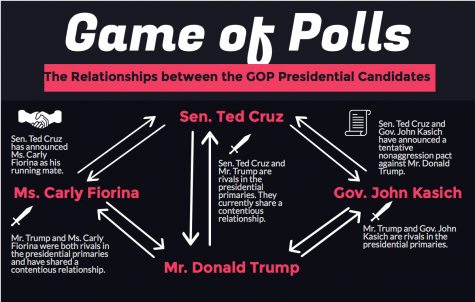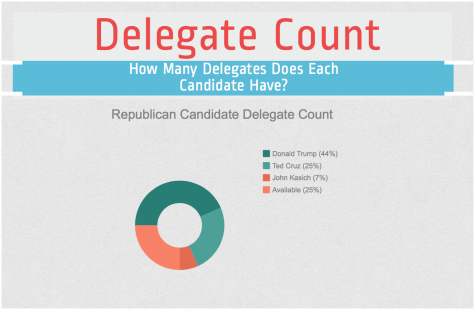Politics Playbook: Explaining Planned Parenthood
Planned Parenthood, a government program that provides health care services for women, has been the center of a maelstrom of controversy after a recently released video allegedly depicted Planned Parenthood officials selling fetal tissue. Signed into law by Former President Richard Nixon in 1970, The Family Planning Services and Population Research Act’s Title X funded Planned Parenthood. Image from Flickr
Operating finance, managing crime and controlling regulations, politics plays an intrinsic, indelible role in almost every aspect of our lives, from the college we choose to even the ingredients in the food we eat. Ever since I was small, politics, with its intricate guidelines, ironbound traditions and socioeconomic nuances, mesmerized me, nurturing my innate interest to further research and learn about politics. However, I discovered that, with the quantity of news flooding the media, most of which is biased, contradictory or incomprehensible, many Americans are confused about what is truly happening in politics. To rectify this dilemma, I decided to take to the Highlander Online to make politics easy to understand by simplifying current events, explaining political processes and examining politicians’ stances on key policy issues.
Dividing Americans, fueling controversy and serving as one of the main issues of the presidential primaries, Planned Parenthood became a contested entity in the United States. This program was recently rocketed to the forefront of national attention after a series of videos depicted Planned Parenthood operatives allegedly selling fetal tissue. However, according to the New York Time’s Editorial Board, these videos were proven to be edited in a largely misleading fashion, since the edited videos eliminated statements by Dr. Deborah Nucatola, Planned Parenthood’s Senior Director of Medical Services, that explained that Planned Parenthood does not profit from tissue donation, requiring only a small fee of between $30 and $100 per sample to cover collection and transportation costs, and that the clinic requires the explicit consent of the patient in order to acquire tissue samples.
Nevertheless, misleading or not, these videos sparked heated debates between pro-choice and pro-life advocates. Various Republican presidential candidates, such as Gov. Bobby Jindal and Sen. Rand Paul, in the wake of the video’s release, have either terminated Medicaid contracts for their state’s Planned Parenthood or have vowed to create senatorial amendments that would strip Planned Parenthood of every single dollar of federal funding. Expressing his views on the organization, Gov. Jindal stated, “I’m here to tell you Planned Parenthood should not get another dime of our taxpayer dollars.” In the same vein, Sen. Paul said, “I plan to do whatever I can to stop [Planned Parenthood] and will introduce an amendment to pending Senate legislation to immediately strip every dollar of Planned Parenthood funding.”
Several Democratic presidential candidates, such as former Secretary of State Hillary Clinton and Senator Bernie Sanders, have come out in complete support of Planned Parenthood, pledging to defend its funding from any cuts. Defending Planned Parenthood, Clinton claimed, “When [politicians] attack women’s health, they attack America’s health, and it’s wrong and we’re not going to let them get away with it.” Similarly, Sen. Sanders stated, “The attempt by Senate Republicans to cut off support for Planned Parenthood is an attack on women’s health; stripping funding for Planned Parenthood would punish the 2.7 million Americans, especially low-income women, who rely on its clinics for affordable, quality health care services including cancer prevention, STI and HIV testing and general primary health care services.”
However, despite the large amount of controversy surrounding the organization, not many Americans are able to state what Planned Parenthood’s true functions entail. So one question remains: what exactly is Planned Parenthood?
Signed into law by Former President Richard Nixon in 1970, The Family Planning Services and Population Research Act’s Title X provided funding for family planning services, such as contraception and family planning information, which gave birth to Planned Parenthood. It was a law passed with bipartisan support, as liberals viewed access to contraception as increasing families’ control over their lives and conservations viewed family planning as a way to keep people off welfare. The controversy only originated after the landmark Supreme Court decision of Roe v Wade, which legalized abortion, leading many people to contest the issue of Planned Parenthood using its funds for abortion services.
However, despite popular perception, a minimal amount of Planned Parenthood’s funds is spent on abortion. Possessing over 700 clinics nationwide, Planned Parenthood dedicates its funding to a myriad of health care services: 42 percent towards tests and treatment for sexually transmitted infections, 34 percent towards contraception, 9 percent towards cancer screening, 11 percent towards women’s services, 3 percent towards abortion and 1 percent towards other services. Planned Parenthood estimates that it provides 400 thousand Pap tests and 500 thousand breast exams, as well as educational programs and outreach to 1.5 million young people and adults, and that it prevents 516 thousand unintended pregnancies and 220 thousand abortions annually by providing contraceptives.
Planned Parenthood receives its funding from a variety of sources. Danielle Kurtzleben reported that the organization’s revenue sources include “$528.4 million from the federal government, $391.8 million from private profit, $305.3 million from non-governmental services and $77.9 million from other sources.” With its $1.3 billion total revenue, the federal government provides more than 40 percent of its budget.
Revealing the laws that fund Planned Parenthood, Kurtzleben stated, “Those public funds come from two programs: Medicaid, the health care program targeted at lower-income Americans, and Title X, a federal family planning program that likewise primary serves lower-income Americans.” Medicaid provides for an overwhelming majority of federal funding, providing more than 75 percent of the money from federal funds. However, Medicaid funds aren’t only provided by the federal government; the money that Planned Parenthood receives from Medicaid is a combination of both federal and state government funds.
It is important to note that Planned Parenthood is prohibited from using federal funds from Title X for abortion services, and that Medicaid, with the passing of the 1977 Hyde Amendment, allows federal Medicaid funds to be used for abortion only in very restricted cases: rape, incest or to protect the life of the mother. Otherwise, excepting those critical cases, Planned Parenthood’s funds for abortion are limited to what the state allows. Showcasing an example of state-specific abortion spending, the Guttmacher Institute stated that in the state of Wisconsin, state Medicaid funds could be used for abortion only “in cases of life endangerment, rape, incest or when necessary to prevent long-lasting damage to the woman’s physical health.”
Planned Parenthood serves many patients throughout the country; the organization itself reveals that “one in five women in the U.S. has visited a Planned Parenthood center at least once in her life.” Many women use Planned Parenthood services, but it is disproportionately women living in poverty who use them. According to a March Government Accountability Office report, as of 2012, 79 percent of people receiving care from Planned Parenthood earn an annual salary of $18.5 thousand, which is 150 percent of the federal poverty level or lower.
Explaining why such a large amount of impoverished people choose care from Planned Parenthood, it is revealed that Planned Parenthood is one of the few clinics that accepts Medicaid as payment. The significance of this is compounded when one considers that an increasing number of physicians and clinics, even those subsisting on federal and state funds, refuses care for Medicaid recipients. Joshua de Gastyne stated that “a recent survey of the medical profession found that 45.7 percent of physicians surveyed are not willing to accept new Medicaid patients.”
Using its acceptance of Medicaid as a defense, Planned Parenthood rallies against threats of federal defunding via terminating Medicaid contracts by arguing that it would violate federal law, which grants Medicaid beneficiaries to care from the provider they choose. However, this does not protect Planned Parenthood from losing federal funds from Title X.
While the Center for Medical Progress video was proven to be a farce, Planned Parenthood has never been a stranger to controversy. In 2013, in the state of Texas, Planned Parenthood was sued for fraud, accused of fraudulently billing Medicaid for women’s health services provided by its clinics in that state from 2003 to 2009.
To summarize, Planned Parenthood is a federal program, funded by both federal and state taxes, that provides health care services for impoverished women who are only able to utilize Medicaid for payment. The main controversy surrounding the organization stems from its abortion services, the levels of which vary depending on state law, as well as the recently released video that falsely portrayed Planned Parenthood officials profiting off the sale of fetal tissue.
While perhaps it won’t be as controversial as it is now, Planned Parenthood will always be a source of debate. Explaining the inherent divisiveness of Planned Parenthood, Mr. Joe Ciurlik, social studies teacher, claimed, “Many people oppose Planned Parenthood fundamentally. They argue that the services Planned Parenthood provides are immoral, and that in a society of natural rights and life, abortions shouldn’t be allowed.”
Mr. Ciurlik also explained the reasoning of pro-choice advocates, saying, “Many people also support Planned Parenthood as well since [the organization] provides necessary health care services for people, for women, that are universally desired, such as screening for cervical cancer.”

Madina Jenks is a senior and a new copy editor for Highlander Publications. As a copy editor, her jobs are pretty simple: write and help others write....







Alo Delgado • Sep 27, 2015 at 3:14 pm
I really like this article and how you incorporated current political opinions on an issues that has been debated over a long time